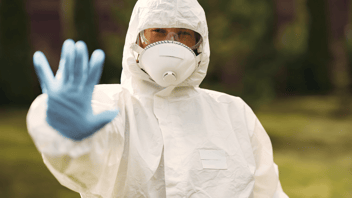The cold months are here — and they will last for a while. With them come major risks for construction workers in terms of winter safety and health. From frostbite to keeping employees on rotation, companies will need to watch out for the dangers and take action proactively. Here are the main cold weather risks and some solutions for them:
1. Hazardous Weather
One way to take precautionary measures ahead of time is to always keep an eye on weather conditions and patterns. Employees should check consistently to see before the week starts and throughout it to prepare for anything. That way, they know when a storm is coming and can plan to work around it.
They can also monitor the weather in real-time to leave the worksite in time. Storms can roll in unexpectedly, harming workers or trapping them at the site. Knowing the weather in-the-moment can be the difference between safe workplace practices and unsafe ones.
Freezing rain, blizzards, hail and high winds are dangerous. Avoid them and help others do the same. Not only do they directly put workers at risk, but they can also indirectly harm them by making the worksite unstable.
2. Health Risks
Perhaps the most prominent dangers to look out for in the colder months are the health risks that come with the weather. Freezing temperatures are hard to endure outside, especially when they can cause things like frostbite and hypothermia.
Temperatures around 0˚F can cause frostbite within minutes of being outside, specifically when workers have skin that’s exposed to the air. The right clothing is essential — including hats, gloves, waterproof jackets and boots. Having masks throughout COVID-19 is still necessary as well.
Other physical risks include falling debris like ice or snow. Clearing the area before taking any other action will be critical to protecting everyone. Personal protective equipment (PPE) like helmets and eye protection will again be invaluable here.
3. No Safety Protocols
Some of the biggest risks of the colder months don’t happen naturally. Not having proper safety protocols is something that workers can completely avoid. Injuries can occur without the right training or connections.
Everyone should have the right accommodations on the job. This step involves giving workers the right gear, equipment and materials to comfortably work in the cold.
However, it also involves preliminary steps before they begin. Workers will need to inspect the area for slippery spots or potential hazards. Salting the area and removing snow and ice are necessary every day throughout the winter.
Then, protocols should be in place if injuries do occur. Contacting emergency services and the workplace must be immediate responses. It’s essential that everyone on the job knows the order of steps to take.
4. A Lack of Preparation
Alongside taking the right steps, construction employees must have the right materials to work with. Ladders and scaffolding are a must — especially ones that have sturdy grips for slippery ground to prevent falls or collapse. Clothing shouldn’t be too tight and employees should change immediately when they get wet.
Furthermore, workers will need emergency kits and gear. Inside these kits should be the following — shovels, ice scrapers, jumper cables, sleeping bags, water and non-perishable food, spare tires, a first aid kit, flares, chains or tow straps, a spare tire and an air compressor.
Liquids should be warm, too. For instance, windshield wiper fluid should be unfreezable and workers should keep any vehicle oils warm by running the machinery. Then, if inclement weather or hazardous conditions strike, workers will have the preparation and tools for every scenario.
5. Bad Scheduling
When it comes to the colder months, no one should be outside for extended periods. Even while on-the-job, employees can navigate big projects where being outside is necessary. Instead of scheduling in shifts that require workers to endure the cold, they should work on a better schedule, on rotation.
After stopping to take a break, they can come to a heated area, whether it’s an office or a heated tent, to warm up change and hydrate. Water and hot drinks will be especially critical during the colder months.
Then, employees can get the rest they need and switch with others who need the same. This setup creates an efficient system that balances work with health.
Preventing Cold-Weather Accidents in Construction
With these steps, construction workers can efficiently complete their projects while keeping themselves and each other safe. Changing protocols and procedures may be a necessary step to adjust for the cold — after that, workers can stick to a routine that works and prevents injuries of all kinds.
Are you interested in learning more about how Ving can help you improve safety and compliance in your workplace?
Schedule a discovery call with us today, and we'll answer all of your questions.
During our call, we'll discuss:
- Your specific safety and compliance challenges
- How Ving can help you overcome those challenges
- The benefits of using Ving
We'll also answer any questions you have about Ving.
So what are you waiting for? Schedule a discovery call today!






Leave a Comment